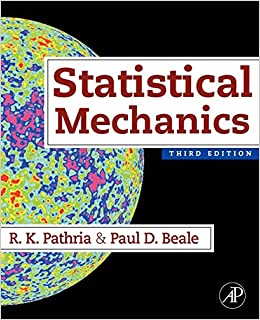Consider a system of (N) classical particles with mass (m) moving in a cubic box with volume
Question:
Consider a system of \(N\) classical particles with mass \(m\) moving in a cubic box with volume \(V=L^{3}\). The particles interact via a short-ranged pair potential \(u\left(r_{i j}ight)\) and each particle interacts with each wall with a short-ranged interaction \(u_{\text {wall }}(z)\), where \(z\) is the perpendicular distance of a particle from the wall. Write down the Lagrangian for this model and use a Legendre transformation to determine the Hamiltonian \(H\).
(a) Show that the quantity \(P=-\left(\frac{\partial H}{\partial V}ight)=\frac{-1}{3 L^{2}}\left(\frac{\partial H}{\partial L}ight)\) can clearly be identified as the instantaneous pressure - that is, the force per unit area on the walls.
(b) Reconstruct the Lagrangian in terms of the relative locations of the particles inside the box \(\boldsymbol{r}_{i}=L \boldsymbol{s}_{i}\), where the variables \(\boldsymbol{s}_{i}\) all lie inside a unit cube. Use a Legendre transformation to determine the Hamiltonian with this set of variables.
(c) Recalculate the pressure using the second version of the Hamiltonian. Show that the pressure now includes three contributions:
(1) a contribution proportional to the kinetic energy,
(2) a contribution related to the forces between pairs of particles, and
(3) a contribution related to the force on the wall.
Show that in the thermodynamic limit the third contribution is negligible compared to the other two. Interpret contributions 1 and 2 and compare to the virial equation of state (3.7.15).
Step by Step Answer:






